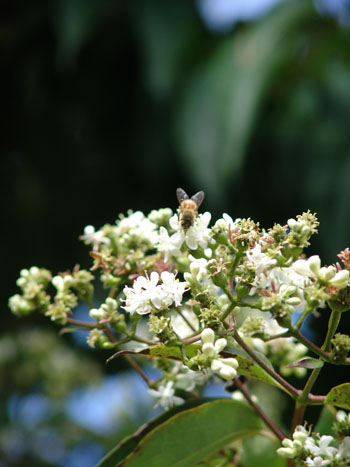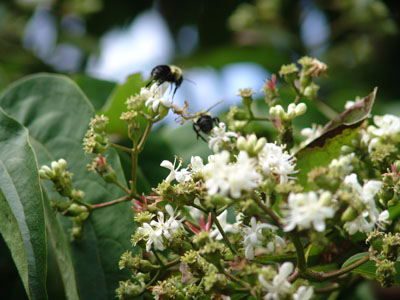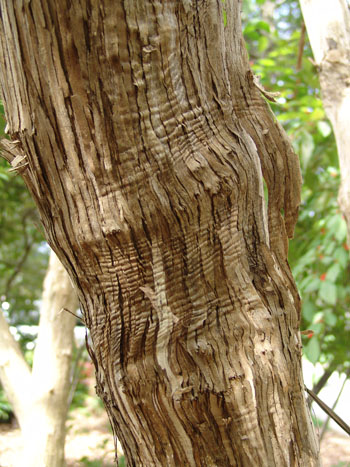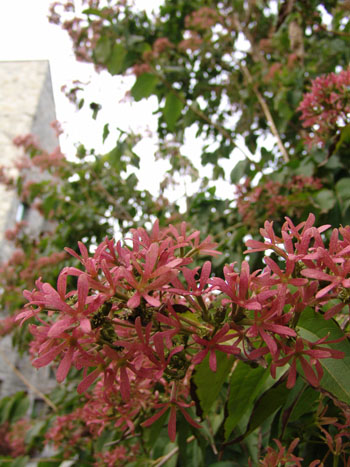
During the last few weeks, the canopy of the seven-son flower has been buzzing with activity. While there has been a lull among other flowering trees and shrubs, the small tree, in the Entrance Garden at the Scott Arboretum, has been bursting with delicate white flowers. The inflorescences have been attracting attention, namely from the local bee community.

Bees working on the flowers of Heptacodium miconioides. photo credit: S. Keitch
The buds of the seven-son flower actually appear earlier in the summer, yet they do not open until late summer and last through September. The plant’s name originates from the six orderly flowers punctuated by a final flower.

Exfoliating bark of Heptacodium miconioides. photo credit: S. Keitch
The seven-son flower has an upright and irregular form, growing in an unpredictable and unique manner. In addition, the seven-son flower has an open form, which allows for understory plantings to be easily accommodated under mature specimens. It can reach heights of 15 to 20 feet, and has an attractive bark that exfoliates in a vertical pattern.

Crimson-color sepals of Heptacodium miconioides. photo credit R. Maurer
The foliage is also quite interesting, with lanceolate leaves that point downward. I would say that the leaves are handsome with a strong, lustrous tone. There is not any appreciable fall color. However, the crimson-colored sepals (calyx) actually last for a longer period of time than the flower display.
It is best to grow the plant with considerable sun exposure, though it will tolerate light shade. It has proven to be a tough plant and has tolerated a range of soil conditions, including high clay content, but performs best in well drained sites. Plant it in the back of a border or as a foundation planting. Come September, you will be delighted by this unique species and its eccentric traits.
